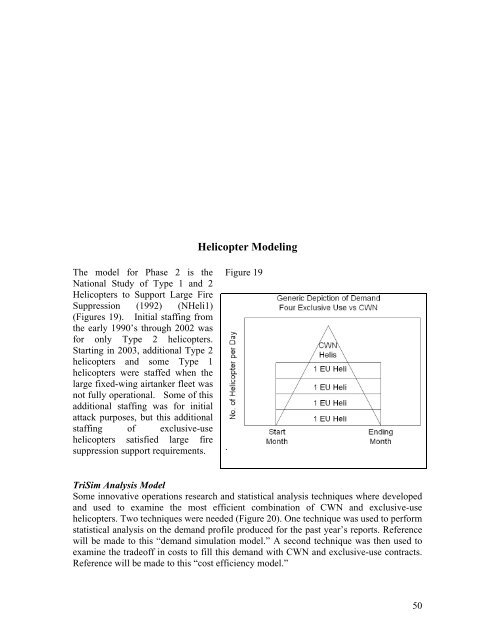Interagency Aviation Strategy - July 2008 - National Wildfire ...
Interagency Aviation Strategy - July 2008 - National Wildfire ...
Interagency Aviation Strategy - July 2008 - National Wildfire ...
You also want an ePaper? Increase the reach of your titles
YUMPU automatically turns print PDFs into web optimized ePapers that Google loves.
Helicopter Modeling<br />
The model for Phase 2 is the<br />
<strong>National</strong> Study of Type 1 and 2<br />
Helicopters to Support Large Fire<br />
Suppression (1992) (NHeli1)<br />
(Figures 19). Initial staffing from<br />
the early 1990’s through 2002 was<br />
for only Type 2 helicopters.<br />
Starting in 2003, additional Type 2<br />
helicopters and some Type 1<br />
helicopters were staffed when the<br />
large fixed-wing airtanker fleet was<br />
not fully operational. Some of this<br />
additional staffing was for initial<br />
attack purposes, but this additional<br />
staffing of exclusive-use<br />
helicopters satisfied large fire<br />
suppression support requirements.<br />
Figure 19<br />
.<br />
TriSim Analysis Model<br />
Some innovative operations research and statistical analysis techniques where developed<br />
and used to examine the most efficient combination of CWN and exclusive-use<br />
helicopters. Two techniques were needed (Figure 20). One technique was used to perform<br />
statistical analysis on the demand profile produced for the past year’s reports. Reference<br />
will be made to this “demand simulation model.” A second technique was then used to<br />
examine the tradeoff in costs to fill this demand with CWN and exclusive-use contracts.<br />
Reference will be made to this “cost efficiency model.”<br />
50
















